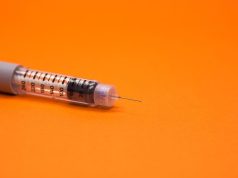Relative improvements over medical cohort in distance, speed, stair climb, pain, quality of life
THURSDAY, Aug. 18, 2016 (HealthDay News) — For patients with intermittent claudication (IC), revascularization interventions are more effective than medical interventions, according to a study published online Aug. 17 in JAMA Surgery.
Emily B. Devine, Ph.D., Pharm.D., from the University of Washington in Seattle, and colleagues conducted a longitudinal observational study involving 323 participants, aged 21 years or older, with newly diagnosed or established IC. Overall, 87.3 percent of participants were in the medical cohort (walking program, smoking cessation counseling, and medications) versus the revascularization intervention (endovascular or surgical).
The researchers found that the median duration of disease was longer for participants in the medical cohort, while more severe disease was reported in the revascularization cohort. At 12 months, significant change scores were seen in the medical cohort for the speed domain of the Walking Impairment Questionnaire, Vascular Quality of Life Questionnaire (VascuQol), and the European Quality of Life-5 Dimension Questionnaire (EQ-5D). Significant improvements were seen in seven domains in the revascularization cohort (distance, speed, stair climb, pain, VascuQol, EQ-5D, and Claudication Symptom Instrument [CSI]). At 12 months the revascularization cohort had relative improvements over the medical cohort in distance, speed, stair climb, pain, VascuQol, EQ-5D, and CSI.
“Those in the revascularization cohort had significantly improved function (Walking Impairment Questionnaire), better health-related quality of life (VascuQol and EQ-5D), and fewer symptoms (CSI) at 12 months compared with those in the medical cohort,” the authors write.
Copyright © 2016 HealthDay. All rights reserved.








